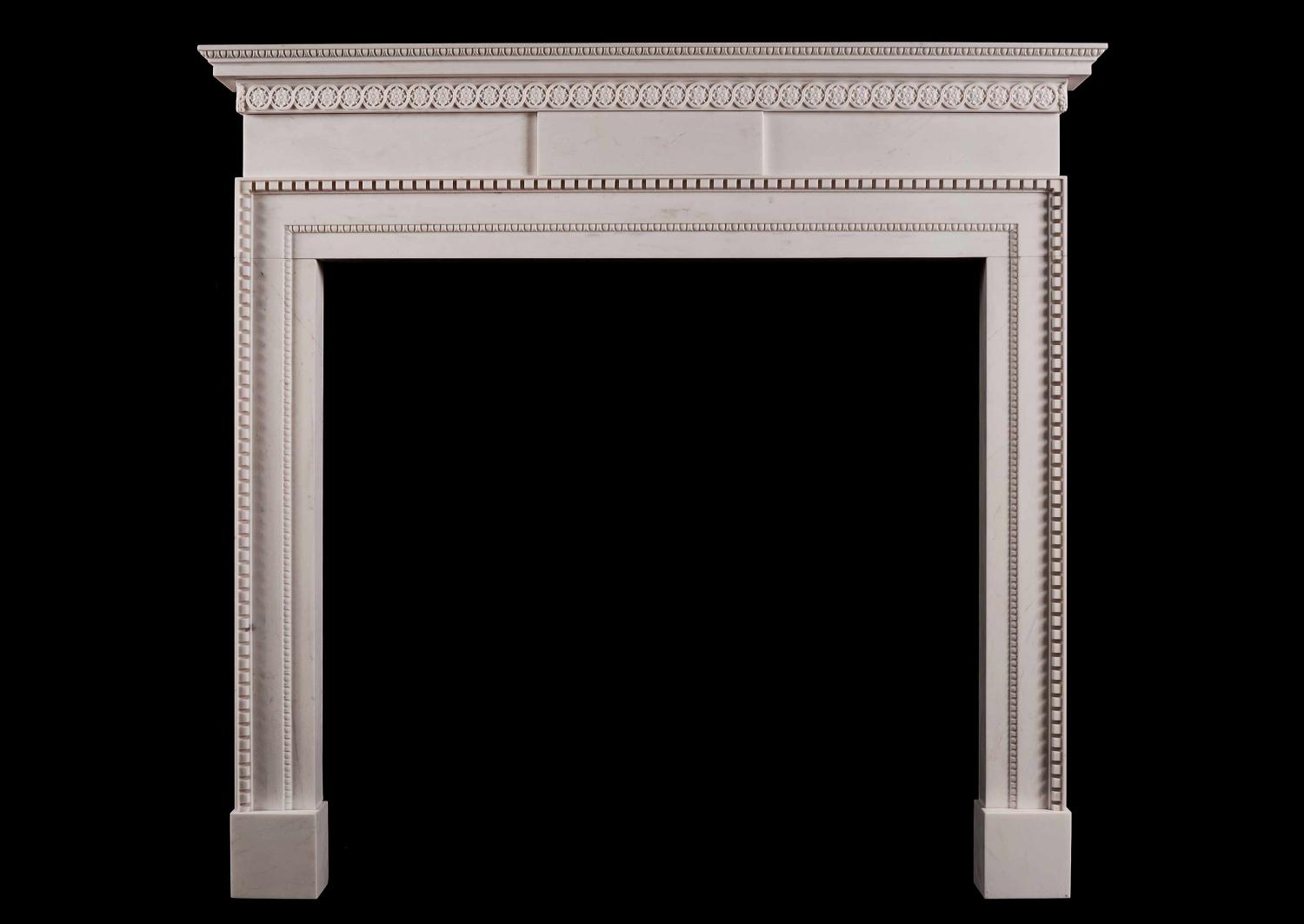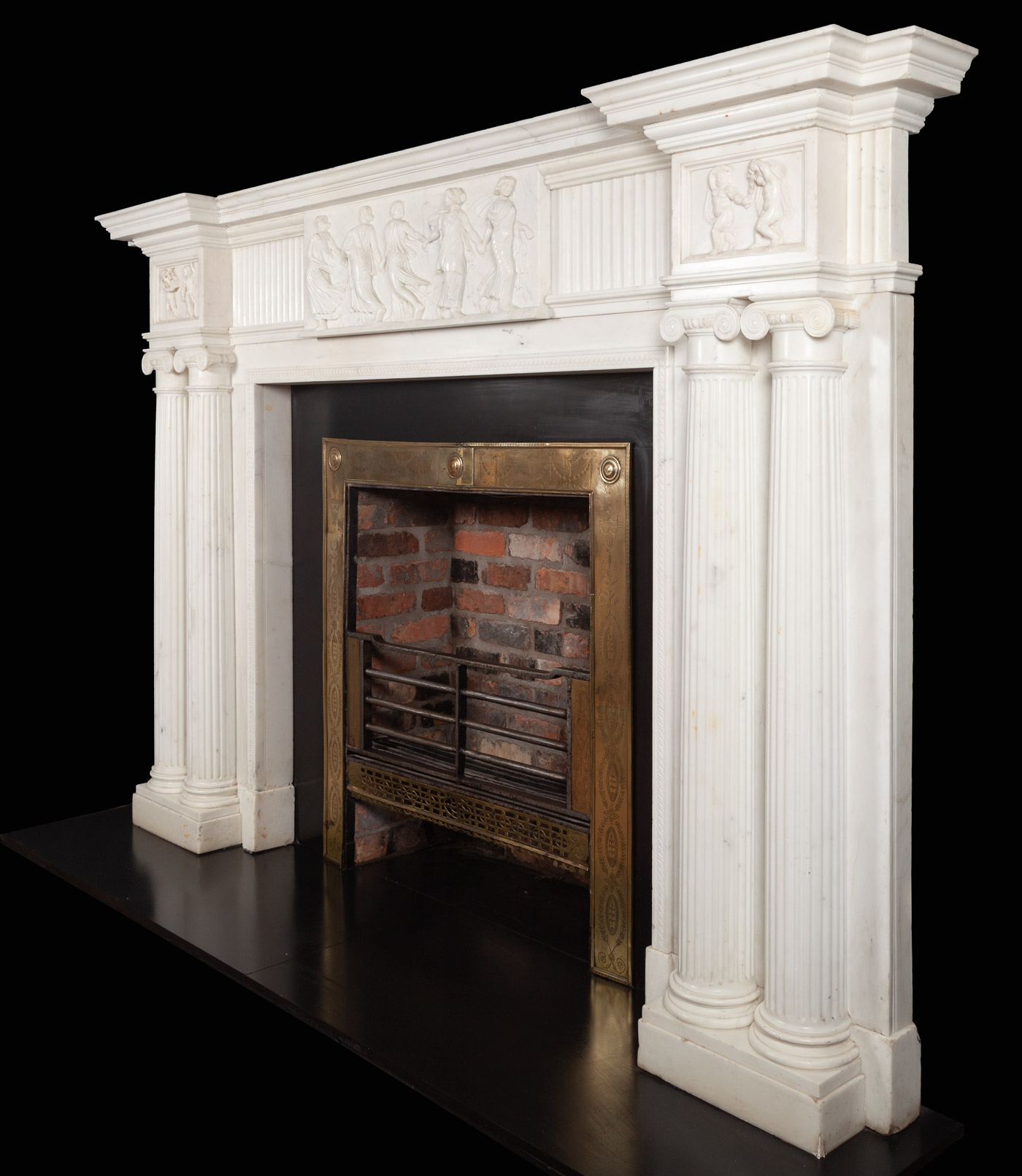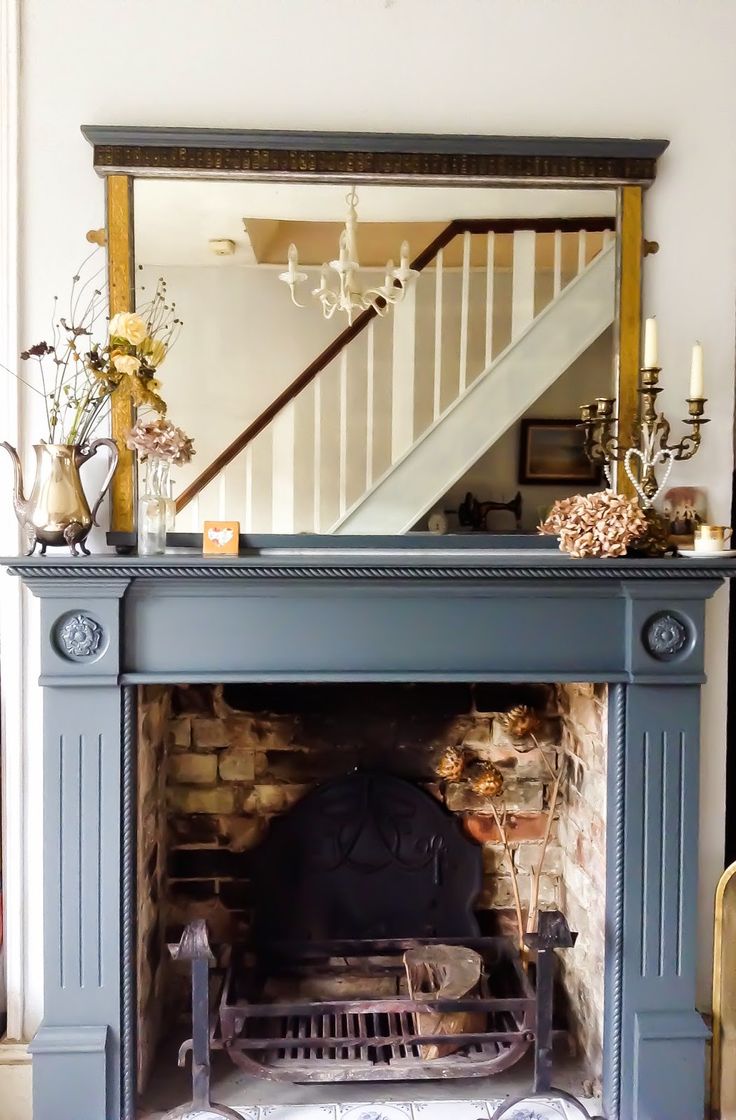Georgian fireplace tiles are a testament to the architectural and decorative elegance of the Georgian era, which spanned from 1714 to 1830. This period is known for its emphasis on symmetry, proportion, and classicism, drawing inspiration from the art and architecture of ancient Greece and Rome. Fireplaces were central to Georgian homes, serving both practical and aesthetic purposes. The tiles used in these fireplaces were not only functional but also decorative, reflecting the taste and style of the time.

History and Evolution
Origins of Georgian Fireplace Tiles
The Georgian era, named after the reigns of the first four King Georges of Britain, saw a significant transformation in architectural styles and interior design. The use of fireplace tiles began as a way to both protect the surrounding areas from heat and to add decorative elements to the home. Early Georgian fireplace tiles were typically hand-painted and featured intricate designs, often depicting scenes from nature, mythology, or daily life.
Materials and Manufacturing Techniques
During the Georgian period, fireplace tiles were primarily made from earthenware or stoneware. The manufacturing process involved pressing clay into molds to create uniform shapes and then firing them in kilns. Advances in glazing techniques allowed for a variety of finishes, from matte to glossy. The development of transfer printing in the mid-18th century revolutionized tile production, enabling more detailed and consistent designs to be applied to the tiles.
Design Influences and Motifs
Georgian fireplace tiles were heavily influenced by the neoclassical movement, which drew inspiration from the art and architecture of ancient Greece and Rome. Common motifs included floral patterns, geometric shapes, and mythological scenes. The use of symmetry and balance was paramount, with designs often featuring repeating patterns that mirrored the Georgian emphasis on order and proportion.

Regional Variations
Different regions within Britain had their unique styles and preferences when it came to fireplace tiles. For example, tiles from the Midlands were often characterized by bold colors and intricate patterns, while those from the North featured more subdued tones and simpler designs. These regional variations reflect the diverse cultural influences and resources available in different parts of the country.
Transition to Victorian Styles
As the Georgian era gave way to the Victorian period, the styles and preferences for fireplace tiles began to change. The ornate and symmetrical designs of the Georgian period were gradually replaced by the more elaborate and eclectic styles of the Victorian era. However, Georgian fireplace tiles remained popular among those who appreciated the classic elegance and timeless beauty of Georgian design.
Revival and Modern Use
In recent years, there has been a resurgence of interest in Georgian fireplace tiles, driven by a broader revival of historical architectural styles. Many homeowners and interior designers are now seeking to incorporate these timeless elements into modern homes. Reproduction tiles that mimic the designs and manufacturing techniques of the Georgian period are widely available, allowing for the restoration and recreation of authentic Georgian fireplaces.

Characteristics of Georgian Fireplace Tiles
Material Composition
Georgian fireplace tiles were predominantly made from ceramic materials, specifically earthenware and stoneware. Earthenware tiles were porous and required glazing to make them waterproof, while stoneware tiles were naturally more durable and less porous. The choice of material often depended on the desired finish and the intended use of the tiles.
Color Palette
The color palette of Georgian fireplace tiles was typically muted and subdued, reflecting the aesthetic preferences of the period. Common colors included soft blues, greens, and browns, with occasional accents of white and black. The use of color was often strategic, with lighter shades used to create a sense of space and darker shades to add depth and contrast.
Design and Patterns
The designs on Georgian fireplace tiles were characterized by their symmetry and balance. Common patterns included floral motifs, geometric shapes, and classical scenes. These designs were often created using transfer printing techniques, which allowed for detailed and consistent patterns to be applied to the tiles. The use of repeating patterns was a hallmark of Georgian design, emphasizing order and proportion.

Glazing Techniques
Glazing played a crucial role in the appearance and durability of Georgian fireplace tiles. Glazes were applied to the surface of the tiles to create a smooth, glossy finish and to protect the underlying ceramic material. Different types of glazes could be used to achieve various effects, from matte to highly reflective finishes. The choice of glaze often depended on the desired aesthetic and the intended use of the tiles.
Size and Shape
Georgian fireplace tiles were typically square or rectangular, with standard sizes ranging from 4×4 inches to 6×6 inches. The size and shape of the tiles were chosen to fit the dimensions of the fireplace surround and to create a cohesive and balanced design. The uniformity of the tiles was important for maintaining the symmetry and proportion that were central to Georgian design principles.
Installation Techniques
The installation of Georgian fireplace tiles required precision and attention to detail. Tiles were often arranged in symmetrical patterns, with careful consideration given to the placement of each tile to ensure a balanced and harmonious design. The use of spacers and levelers helped to achieve a uniform appearance, while grout was used to fill the gaps between the tiles and to secure them in place.

Interesting Articles You May Want to Check:
- Tiles Suitable for Fireplace Hearth
- Paint over Marble Tile Fireplace
- Cement Tile Fireplace Surround
- Mottled Fireplace Tiles
- Best Tile for Fireplace

Decorative Styles and Themes
Neoclassical Influence
The neoclassical influence on Georgian fireplace tiles is evident in the use of motifs and designs inspired by ancient Greek and Roman art. Common themes included mythological scenes, floral patterns, and geometric shapes. The emphasis on symmetry and proportion reflected the Georgian fascination with classical ideals of beauty and order.
Floral and Botanical Themes
Floral and botanical themes were popular in Georgian fireplace tile designs, reflecting the period’s interest in nature and the natural world. These designs often featured intricate depictions of flowers, leaves, and vines, arranged in symmetrical patterns. The use of floral motifs added a sense of elegance and refinement to the fireplace surround.
Geometric Patterns
Geometric patterns were another common theme in Georgian fireplace tiles. These designs often featured repeating shapes such as squares, triangles, and hexagons, arranged in symmetrical and balanced patterns. The use of geometric motifs reflected the Georgian emphasis on order and precision and added a sense of structure and stability to the fireplace surround.

Pastoral and Landscape Scenes
Pastoral and landscape scenes were popular motifs on Georgian fireplace tiles, reflecting the period’s romanticized view of rural life and the natural world. These designs often depicted idyllic scenes of countryside landscapes, complete with trees, rivers, and animals. The use of pastoral motifs added a sense of tranquility and harmony to the fireplace surround.
Mythological and Historical Themes
Mythological and historical themes were also common in Georgian fireplace tile designs. These motifs often depicted scenes from classical mythology or historical events, adding a sense of grandeur and timelessness to the fireplace surround. The use of mythological and historical themes reflected the Georgian fascination with the past and the classical world.
Custom and Bespoke Designs
In addition to the common decorative styles and themes, many Georgian fireplace tiles were custom-designed to reflect the tastes and preferences of individual homeowners. These bespoke designs often featured personalized motifs and patterns, created by skilled artisans using traditional techniques. The use of custom designs added a unique and personal touch to the fireplace surround, making it a true reflection of the owner’s style and taste.

Restoration and Preservation
Assessing the Condition
The first step in restoring and preserving Georgian fireplace tiles is to assess their condition. This involves inspecting the tiles for signs of damage, such as cracks, chips, or fading. It is important to determine the extent of the damage and whether the tiles can be repaired or if they need to be replaced. Professional conservators can provide expert assessments and recommendations for the best course of action.
Cleaning and Maintenance
Cleaning and maintenance are essential for preserving the appearance and integrity of Georgian fireplace tiles. Regular dusting and gentle cleaning with a mild soap solution can help prevent the buildup of dirt and grime. It is important to avoid using abrasive cleaners or harsh chemicals, as these can damage the tiles and the glaze. Professional cleaning services may be required for more thorough cleaning and maintenance.
Repairing Damaged Tiles
Repairing damaged Georgian fireplace tiles requires skill and precision. Small cracks and chips can often be filled with a suitable filler, then sanded and painted to match the original design. More extensive damage may require the replacement of individual tiles. Reproduction tiles that match the original design can be used to maintain the authenticity of the fireplace surround.

Replacing Missing Tiles
Replacing missing tiles in a Georgian fireplace surround can be challenging, especially if the original tiles are no longer available. Reproduction tiles that match the size, shape, and design of the original tiles can be used to fill the gaps. It is important to ensure that the new tiles are properly aligned and installed to maintain the overall symmetry and balance of the design.
Protecting Against Future Damage
Protecting Georgian fireplace tiles from future damage involves taking preventative measures to minimize wear and tear. This can include using protective barriers to shield the tiles from direct heat, and avoiding placing heavy objects on or near the tiles. Regular inspections and maintenance can help identify and address any potential issues before they become serious problems.
Professional Conservation Services
In some cases, professional conservation services may be required to restore and preserve Georgian fireplace tiles. Conservators with expertise in historical tile restoration can provide specialized treatments and techniques to repair and protect the tiles. Professional conservation services can help ensure that the tiles are preserved for future generations, maintaining their historical and aesthetic value.

Incorporating Georgian Fireplace Tiles in Modern Design
Blending Old and New
Incorporating Georgian fireplace tiles into modern design involves blending old and new elements to create a cohesive and harmonious look. This can be achieved by pairing the classic elegance of Georgian tiles with contemporary furnishings and decor. The use of neutral color palettes and clean lines can help balance the ornate designs of the tiles with the simplicity of modern design.
Creating a Focal Point
Georgian fireplace tiles can be used to create a striking focal point in a modern room. The intricate designs and patterns of the tiles can draw the eye and add visual interest to the space. This can be achieved by using the tiles to frame the fireplace, creating a central feature that anchors the room and enhances its overall aesthetic.
Mixing Materials and Textures
Mixing materials and textures is another way to incorporate Georgian fireplace tiles into modern design. This can include pairing the tiles with sleek, modern materials such as glass, metal, and concrete. The contrast between the traditional designs of the tiles and the contemporary materials can create a dynamic and visually appealing look.
Using Reproduction Tiles
Reproduction Georgian fireplace tiles are widely available and can be used to achieve an authentic look without compromising on modern functionality. These tiles are designed to mimic the appearance and craftsmanship of original Georgian tiles, while offering the durability and ease of maintenance of modern materials. Reproduction tiles can be used to create a seamless blend of old and new elements in a modern space.
Customizing Designs
Customizing the design of Georgian fireplace tiles allows for greater flexibility and personalization in modern design. This can include creating bespoke patterns and motifs that reflect the homeowner’s style and preferences. Custom designs can be used to complement the overall decor and create a unique and personalized look.
Enhancing with Lighting
Lighting can be used to enhance the appearance of Georgian fireplace tiles and highlight their intricate designs. This can include using spotlights or accent lighting to illuminate the fireplace surround and draw attention to the tiles. The use of lighting can create a dramatic and visually appealing effect, enhancing the overall ambiance of the room.

Common Mistakes to Avoid
Ignoring Historical Context
One common mistake when working with Georgian fireplace tiles is ignoring the historical context and significance of the tiles. It is important to understand the historical and architectural background of the tiles to ensure that they are used and preserved appropriately. Ignoring the historical context can result in inappropriate alterations and a loss of historical value.
Using Incorrect Materials
Using incorrect materials for repairs or replacements can compromise the integrity and appearance of Georgian fireplace tiles. It is important to use materials that match the original tiles in terms of composition, color, and finish. Using incorrect materials can result in a mismatched and inauthentic look, and can also cause damage to the original tiles.
Improper Installation
Improper installation of Georgian fireplace tiles can lead to a variety of issues, including misalignment, gaps, and uneven surfaces. It is important to follow proper installation techniques and to use the appropriate tools and materials. Improper installation can compromise the overall appearance and functionality of the fireplace surround.
Overlooking Regular Maintenance
Overlooking regular maintenance can result in the deterioration of Georgian fireplace tiles over time. Regular cleaning, inspections, and repairs are essential for preserving the appearance and integrity of the tiles. Neglecting maintenance can lead to more serious issues and costly repairs in the future.
Failing to Consult Professionals
Failing to consult professionals when working with Georgian fireplace tiles can result in mistakes and damage. Professional conservators and installers have the expertise and experience to handle historical tiles appropriately and to ensure that they are preserved and installed correctly. Consulting professionals can help avoid costly mistakes and ensure the best possible outcome.
Not Considering Future Damage
Not considering future damage can lead to the deterioration of Georgian fireplace tiles over time. It is important to take preventative measures to protect the tiles from wear and tear, such as using protective barriers and avoiding placing heavy objects on or near the tiles. Regular inspections and maintenance can help identify and address potential issues before they become serious problems.

What makes Georgian fireplace tiles unique compared to other historical tile styles?
Georgian fireplace tiles are unique for their emphasis on symmetry, proportion, and classical motifs inspired by ancient Greece and Rome. The designs often feature intricate patterns, floral motifs, and mythological scenes, reflecting the neoclassical influences of the Georgian period. The use of muted color palettes and high-quality materials further distinguishes Georgian tiles from other historical styles, making them a distinctive and elegant choice for fireplace surrounds.
Can I use Georgian fireplace tiles in a modern home?
Yes, Georgian fireplace tiles can be effectively incorporated into modern homes. Blending these classic tiles with contemporary furnishings and decor can create a harmonious and visually appealing look. Using neutral color palettes and clean lines helps balance the ornate designs of the tiles with the simplicity of modern design. Reproduction tiles are also available, offering the aesthetic appeal of original Georgian tiles with the durability and ease of maintenance of modern materials.
How do I maintain and clean Georgian fireplace tiles?
Maintaining and cleaning Georgian fireplace tiles involves regular dusting with a soft cloth and gentle cleaning with a mild soap solution. It is important to avoid using abrasive cleaners or harsh chemicals, as these can damage the tiles and the glaze. Regular inspections for signs of damage, such as cracks or chips, are also recommended. Professional cleaning services may be required for more thorough cleaning and maintenance.
Are there reproduction Georgian fireplace tiles available?
Yes, reproduction Georgian fireplace tiles are widely available and can be used to achieve an authentic look without compromising on modern functionality. These tiles are designed to mimic the appearance and craftsmanship of original Georgian tiles while offering durability and ease of maintenance of modern materials. Reproduction tiles are a great option for restoring or recreating authentic Georgian fireplaces.
Can I repair damaged Georgian fireplace tiles myself?
Minor repairs to Georgian fireplace tiles, such as filling small cracks and chips, can often be done by homeowners with the appropriate materials and techniques. However, more extensive damage may require professional assistance. It is important to use materials that match the original tiles in terms of composition, color, and finish. Consulting a professional conservator for significant repairs ensures that the tiles are restored correctly and maintain their historical and aesthetic value.
What should I consider when installing Georgian fireplace tiles?
When installing Georgian fireplace tiles, it is important to consider the historical context and significance of the tiles. Proper preparation, such as cleaning and leveling the installation surface, is essential. Using the correct materials and following proper installation techniques ensures a secure and uniform appearance. Consulting professionals for installation can help avoid mistakes and ensure the best possible outcome. Regular maintenance and preventative measures, such as using protective barriers, help protect the tiles from future damage.

Related Posts:
- Natural Stone Tile Fireplace Surround
- Heat Resistant Paint for Fireplace Tiles
- Tiled Fireplaces for Wood Burners
- Heat Resistant Tile Paint for Fireplaces
- Tile Electric Fireplace
- Fireplace Finishes Tile
- Fireplace Backsplash Tile
- Herringbone Marble Tile Fireplace
- Paint over Marble Tile Fireplace
- Paint over Marble Tile Fireplace